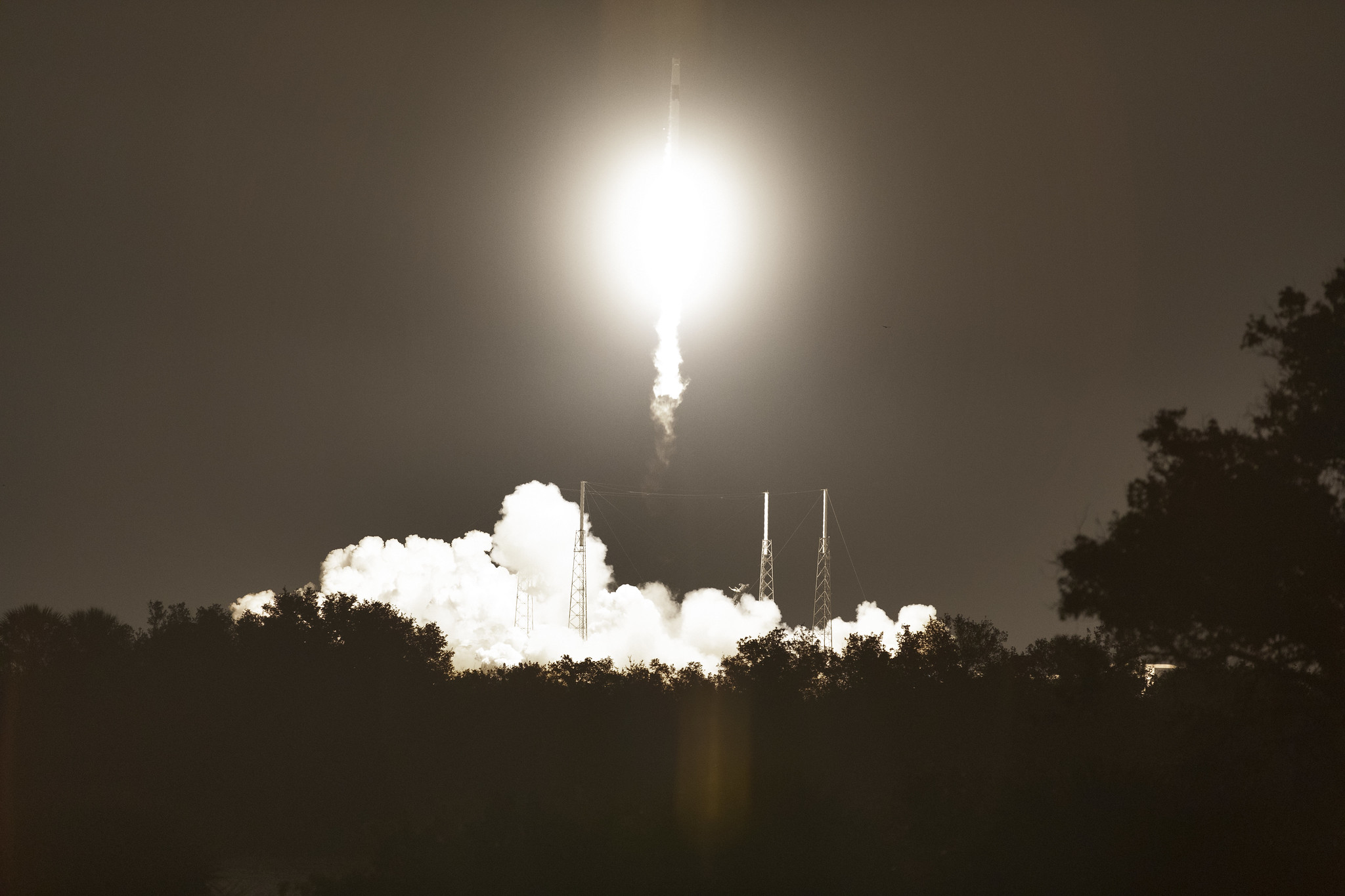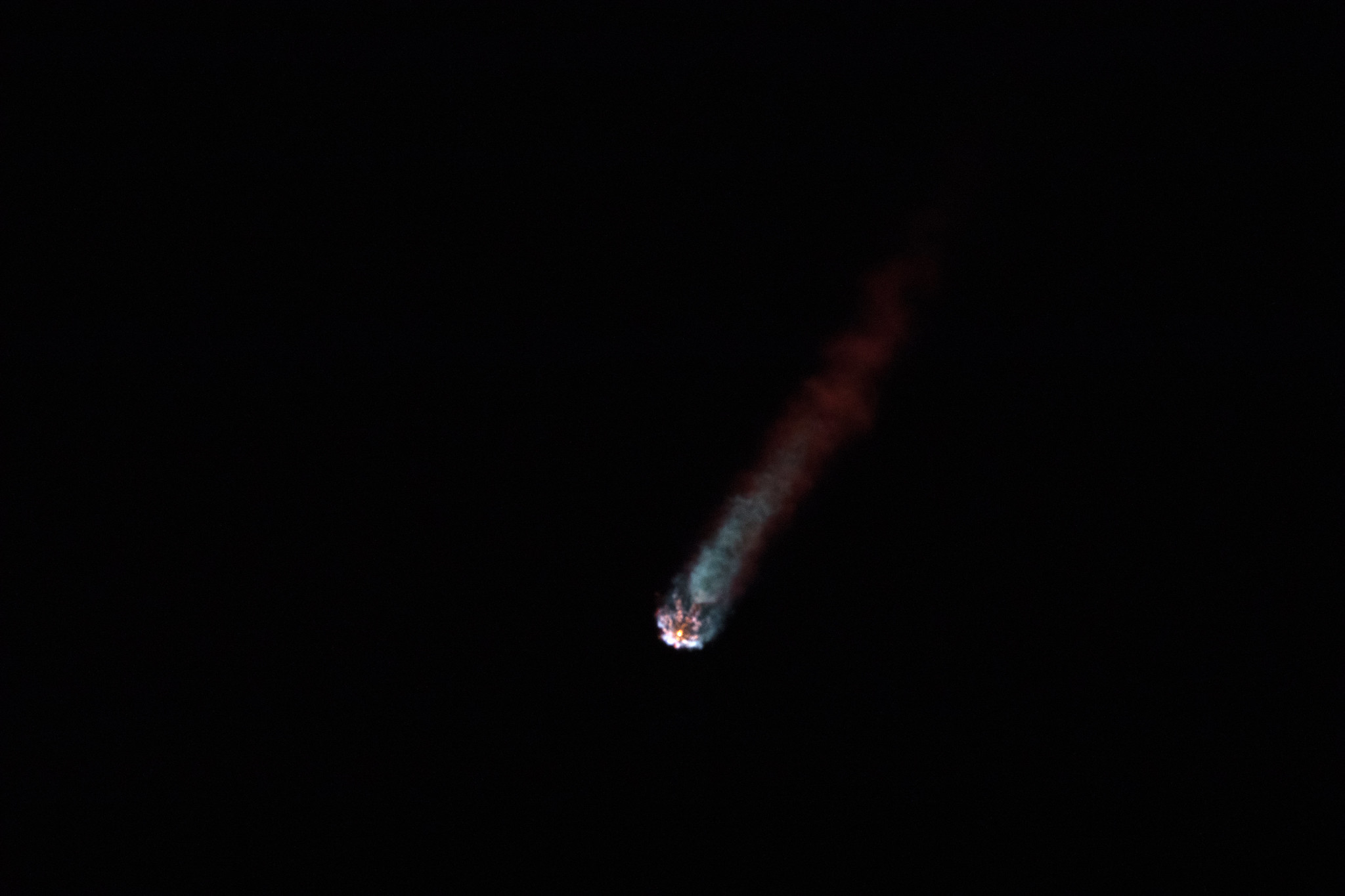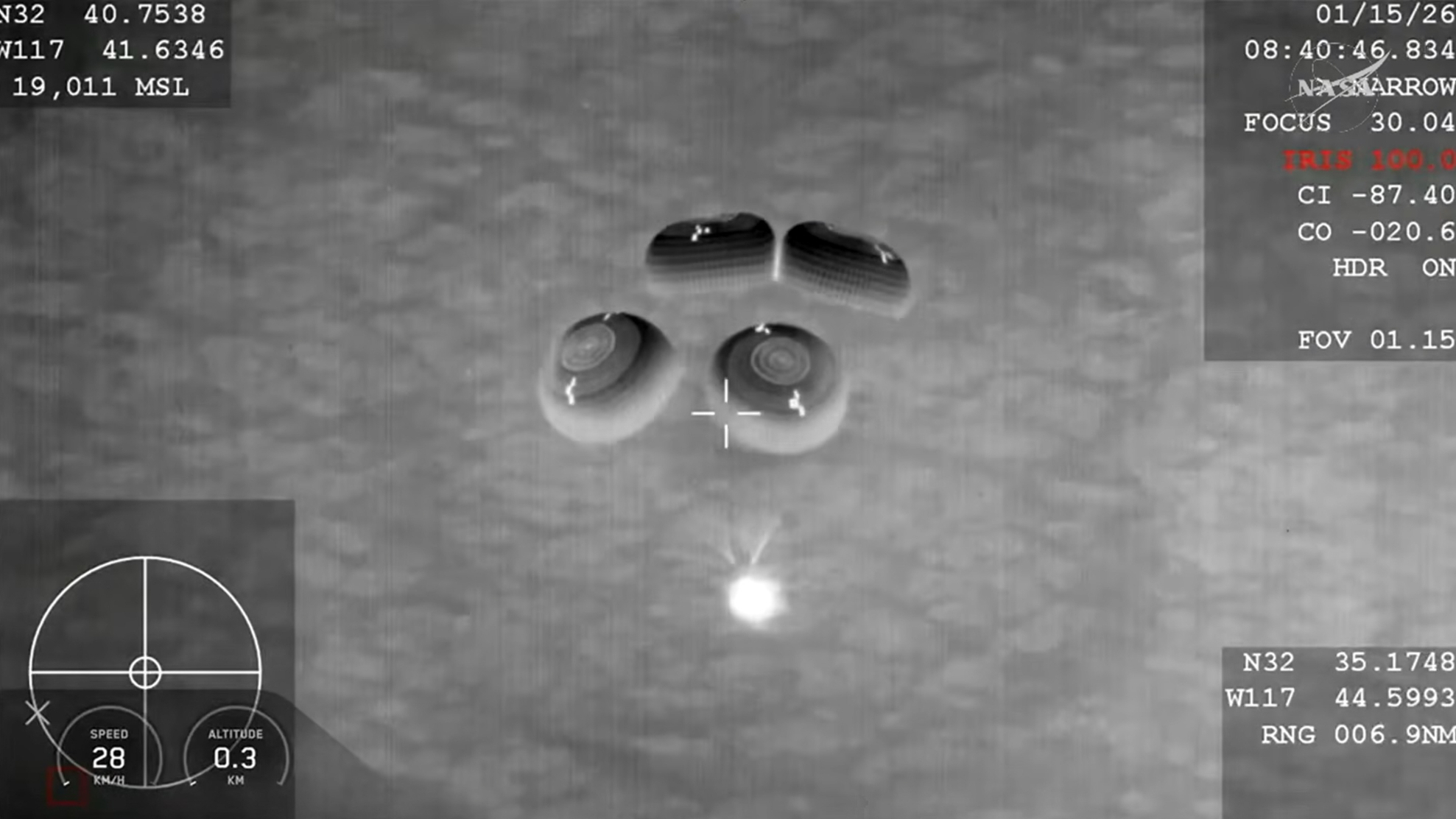It's Star Wars Day and SpaceX Just Launched Its Own 'Falcon' Into Space
It's no bucket of bolts.
It may not be the ship that made the Kessel Run in less than 12 parsecs, but a SpaceX "Falcon" launched into space today just in time for Star Wars Day.
The Falcon 9 rocket (which SpaceX CEO Elon Musk named in honor of the fictional Millennium Falcon from "Star Wars") launched a Dragon resupply ship filled with NASA cargo from Florida's Cape Cape Canaveral Air Force Station this morning. By coincidence, the mission launched on May 4, or May the Fourth, as fans of the "Star Wars" film franchise call it.
"May the Fourth be with you," SpaceX manufacturing engineer Jessica Anderson said while signing off the company's live launch commentary, a callback to the "May the Force be with you" phrase of the Jedi in the "Star Wars" films. NASA spokesperson Jennifer Wolfinger also echoed those words in the space agency's own broadcast.
Related: The Best 'Star Wars Day' Deals for May the Fourth!
SpaceX has developed three types of Falcon rockets over the years: the small Falcon 1, the workhorse Falcon 9 and the heavy-lift Falcon Heavy. And while they don't look anything like the iconic Millennium Falcon flown by Han Solo and his Wookie pal Chewbacca in "Star Wars," there are some striking similarities between the two space vehicles.
A Reusable Cargo Freighter
Just as the Millennium Falcon is a Corellian freighter haul payloads (and sometimes passengers) across the galaxy, SpaceX's Falcon 9 and Falcon Heavy boosters are built haul payloads into orbit. (SpaceX no longer flies Falcon 1 rockets. The last one flew in 2009.)
The first stages of the Falcon 9 and Falcon Heavy rockets are also reusable, just like the Millennium Falcon. In the "Star Wars" universe, Han Solo and other characters regularly refuel and fly their Falcon over and over again.
Breaking space news, the latest updates on rocket launches, skywatching events and more!
Related: The History of Lego's Millennium Falcon: A Photo Timeline
During today's Falcon 9 launch, SpaceX returned the booster's first stage to Earth with a pinpoint landing on a drone ship in the Atlantic Ocean about 12 miles (19 kilometers) off the coast of Florida. The booster will eventually fly again, launching more NASA cargo to the station on at least one more mission, and possibly a third, said Kenny Todd, NASA's manager for international Space Station operations and integration, after the successful launch.
Elon Musk has said that eventually, SpaceX hopes to fly a Falcon 9 rocket twice within 24 hours. That would put SpaceX's rockets on par with the Millennium Falcon, which appears to have made the trip from Tatooine to the Death Star (near the former site of Alderaan), only to escape the Empire and reach the Rebel base on Yavin 4 all in the same day in "Star Wars: Episode IV - A New Hope."
Related: Our Favorite 'Star Wars' Ships from a Galaxy Far, Far Away
The Millennium Falcon isn't the only fictional object SpaceX has named its vehicles after. The Dragon spacecraft, for example, are named after Puff the Magic Dragon, Elon Musk has said. The company's drone ship landing pads, "Of Course I Still Love You" and "Just Read The Instructions," are named after the giant sentient starships of "The Culture" series by science fiction author Iain M. Banks.
It's only sheer coincidence that SpaceX's Falcon 9 launched the Dragon cargo mission for NASA on "Star Wars Day."
The mission was originally scheduled to launch April 26, but was delayed several times to allow time for extra vehicle checks, await optimal orbital mechanics conditions for flight, as well as fix a minor helium leak at the launchpad and electrical issue on the drone ship.
Dragon is carrying more than 5,500 lbs. (2,495 kilograms) of experiments and supplies for astronauts on the International Space Station. It will arrive at the orbiting lab early Monday (May 6).
You can watch Dragon's arrival live here, courtesy of NASA TV, beginning at 5:30 a.m. EDT (0930 GMT) on Monday.
- 'Star Wars'! 40 Surprising Facts from a Galaxy Far, Far Away
- See the Evolution of SpaceX's Rockets in Pictures
- The Greatest 'Star Wars' Villains of All Time
Email Tariq Malik at tmalik@space.com or follow him @tariqjmalik. Follow us @Spacedotcom and Facebook.

Tariq is the award-winning Editor-in-Chief of Space.com and joined the team in 2001. He covers human spaceflight, as well as skywatching and entertainment. He became Space.com's Editor-in-Chief in 2019. Before joining Space.com, Tariq was a staff reporter for The Los Angeles Times covering education and city beats in La Habra, Fullerton and Huntington Beach. He's a recipient of the 2022 Harry Kolcum Award for excellence in space reporting and the 2025 Space Pioneer Award from the National Space Society. He is an Eagle Scout and Space Camp alum with journalism degrees from the USC and NYU. You can find Tariq at Space.com and as the co-host to the This Week In Space podcast on the TWiT network. To see his latest project, you can follow Tariq on Twitter @tariqjmalik.


